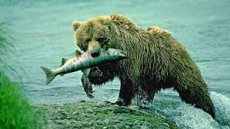

Ecological principles and Processes
Ecological principles are the scientific study of the distribution and abundance of organisms; and the interactions that determine their distribution and abundance. There are various factors which determine the abundance and distribution of organisms. These factors are: environmental conditions, resource availability, interaction with other organisms, ability to disperse to new areas, geographical barriers, evolutionary/ geological history and the action of keystone species.
Some definitions to help with our understanding:
1)A population are the individuals of the same species occupying a defined location at a defined time.
2)Mutualism is the doctrine that mutual dependence is necessary to social well-being.
3)Carrying capacity is the number of people, animals, or crops which a region can support without environmental degradation.
4)Mortality factor is the factor that is believed to be the main cause of death in each phase of life cycle.
5)A community is an assemblage of species populations that occur together in space and time.
6)An ecosystem is the biological community and the abiotic environment in which it is set.
7)Abiotic resources are natural but non-living factors, for example temperature, and sunlight availability
8)Biotic resources are living things such as prey.
A key stone species is often the dominant predator whose removal causes disruption to biodiversity. For example, removing the top predator allows for prey population to expand rapidly which could lead to depletion of other organisms. Another keystone species could be involved in nutrient cycling, like prairie dogs, other organisms depend on this nutrient cycling for survival. Examples of keystone species: beavers, pacific salmon, bees, elephants, jaguars, mountain lions, and the American alligator.
Resource availability can be determined by intraspecific competition. This is competition within the same species. For example, if we have a grey squirrel population of 10 squirrels and another population of 20 squirrels. If both populations only have 100 acorns, the population of 20 squirrels will deplete the acorns first. The larger population will have greater competition for food. Intraspecific competition does not only refer to food, it can also be for shelter. If there is only enough shelter to accommodate to 15 squirrels, the 10 squirrels can happily find shelter, whilst the 20 squirrels will have to compete for space.
Interspecific completion also affects resource availability. This is similar to intraspecific competition, the only difference being that it is completion between different species. In both intraspecific and interspecific competition organisms may act aggressively towards each other to fight for survival, this is where Darwin’s survival of the fittest comes into action. Interference completion is when organisms directly interact with one another (such as using aggression) to compete. Exploitation completion is indirect, one organism is affected by what resources remain due to the action of another organism.
Predation is the preying of one animal on others. For example, the prey are the fish and the predator is the bear. Predator-prey relationships are crucial for population control; it helps to keep the community size within the carrying population. If the predator population is high, then the prey population will decrease (as they are being eaten), a reduction in the prey population will mean a reduced resource supply for the predator population, therefore the predator population will naturally decrease. This is called ‘density dependence.’ However, population is affected in proportion to its size.
image- https://www.youtube.com/watch?v=dkQYqI4FXxA

0 Comment:
Be the first one to comment on this article.